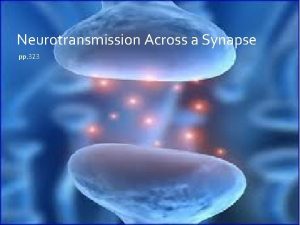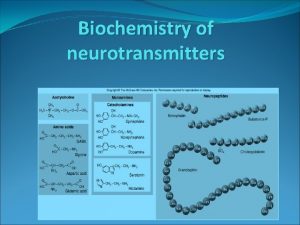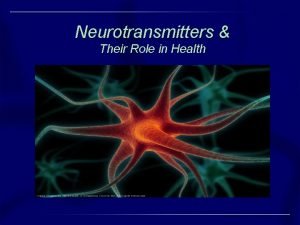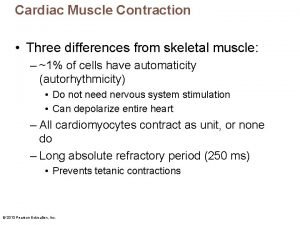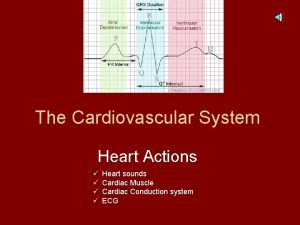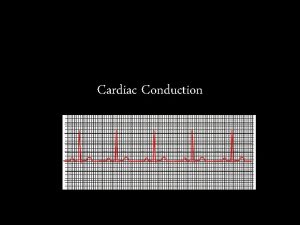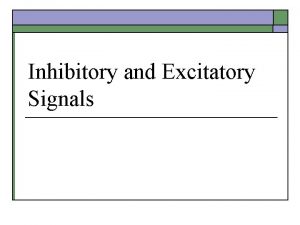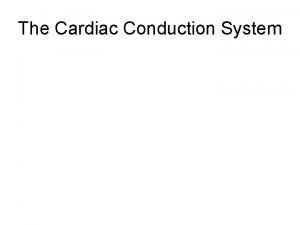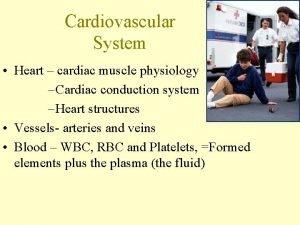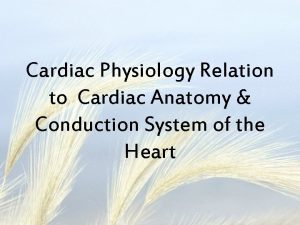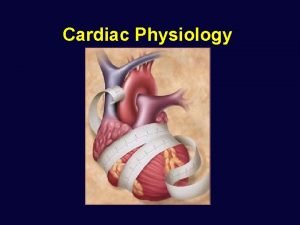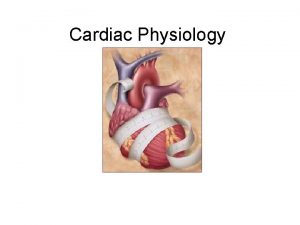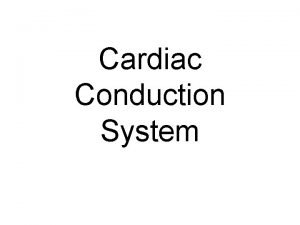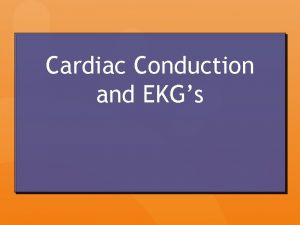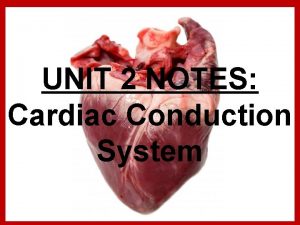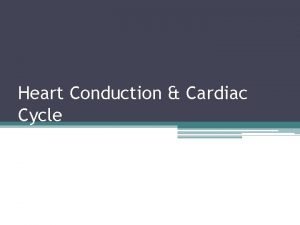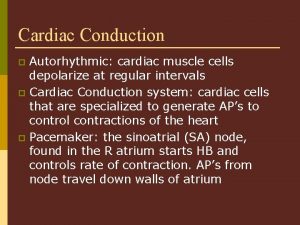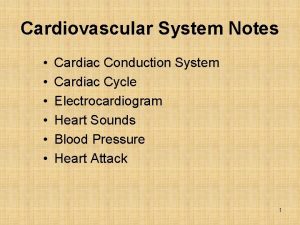Cardiac Conduction Physiology of Cardiac Conduction The excitatory














- Slides: 14

Cardiac Conduction

Physiology of Cardiac Conduction • The excitatory & electrical conduction system of the heart is responsible for the contraction and relaxation of the heart muscle. • The sinoatrial node (SA node) is the pacemaker where the electrical impulse is generated.

Steps of Cardiac Conduction 1. SA node fires to the atrioventricular (AV) node. 2. AV node delays for 0. 1 seconds while the atria contract (blood moves down into the ventricles 3. Impulse moves down the septum (space between R and L ventricles through the R and L bundle branches 4. Bundle branches carry impulse through Purkinje fibers to initiate ventricular contraction (blood is pumped out)


What an electrocardiogram (ECG or EKG) means

The ECG (or EKG)

Deflection waves P wave • Atrial systole • Atria squeeze (contract) • Results of depolarization from SA node throughout atria • Normal duration is 0. 08 to 0. 11 seconds

Deflection waves QRS complex • Results due to depolarization of ventricles • Ventricular systole & atrial diastole • R waves are deflected positively and the Q and S waves are negative • Lasts 0. 08 s (Normally not longer than 0. 10 s in duration)

Deflection waves T wave • Ventricular diastole • Ventricles relax and heart is “at rest” • Results due to repolarization of ventricles • Lasts 0. 16 s

Normal ECG Deflection Wave Pattern

Abnormal ECG Deflection Wave Patterns Sinus Bradycardia “Slow Heartbeat” Rate = 40 -59 b. p. m.

Abnormal ECG Deflection Wave Patterns Sinus Tachycardia Rate = 101 -160 b. p. m. • Caused by increased body temperature, stress or response to pain

Abnormal ECG Deflection Wave Patterns Ventricular Fibrillation • Caused by a heart attack (myocardial infarction or MI)

Abnormal ECG Deflection Wave Patterns Asystole (Flatline) • Caused by cardiac arrest (no electrical activity in the heart • Yer dead…
 Acetylcholine excitatory or inhibitory
Acetylcholine excitatory or inhibitory Types of neurotransmitters
Types of neurotransmitters Inhibitory neurotransmitters
Inhibitory neurotransmitters Excitatory cold therapy
Excitatory cold therapy Pacemaker potential
Pacemaker potential Cardiac conduction
Cardiac conduction Các châu lục và đại dương trên thế giới
Các châu lục và đại dương trên thế giới Khi nào hổ mẹ dạy hổ con săn mồi
Khi nào hổ mẹ dạy hổ con săn mồi Từ ngữ thể hiện lòng nhân hậu
Từ ngữ thể hiện lòng nhân hậu Thế nào là hệ số cao nhất
Thế nào là hệ số cao nhất Diễn thế sinh thái là
Diễn thế sinh thái là Slidetodoc
Slidetodoc Vẽ hình chiếu vuông góc của vật thể sau
Vẽ hình chiếu vuông góc của vật thể sau 101012 bằng
101012 bằng Lời thề hippocrates
Lời thề hippocrates
